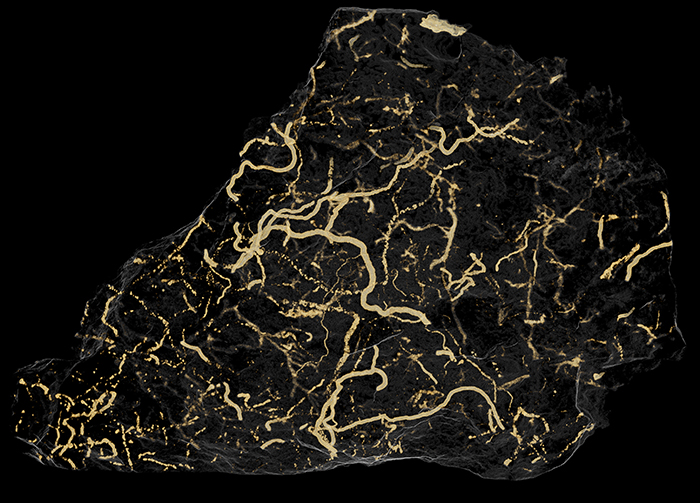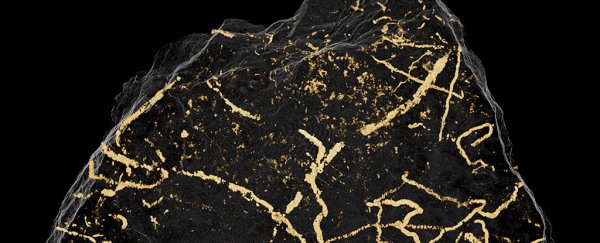A new set of fossils dating back more than half a billion years has been uncovered by scientists: left behind by the earliest forms of complex life on Earth, these fossils could contain clues about the very beginnings of evolution on our planet.
These are actually what's known as trace fossils - the tracks and burrows left by living organisms, and the find means palaeontologists may have to reconsider when complex life first appeared on Earth.
The fossils date back to about 555-542 million years ago, as the Ediacaran Period moved into the Cambrian Period, and just before the Cambrian explosion – a crucial time in Earth's history where many of the broad animal groupings, or phyla, we use today can be traced to.
In other words, the Cambrian explosion saw life explode onto the planet, and these fossils give us a look at the millennia leading up to it.
 A microtomography X-ray of trace fossil in sediment. Credit: University of Manchester
A microtomography X-ray of trace fossil in sediment. Credit: University of Manchester
"This is an especially exciting find due to the age of the rocks," says one of the team, Russell Garwood from the University of Manchester in the UK. "These fossils are found in rock layers which actually pre-date the oldest fossils of complex animals – at least that is what all current fossil records would suggest."
"The evolutionary events during the Ediacaran-Cambrian transition are unparalleled in Earth history. That's because current fossil records suggests that many animal groups alive today appeared in a really short time interval."
If you want a comparison, dinosaurs are thought to have roamed the Earth between 230 and 65 million years ago, during the Mesozoic Era.
These new trace fossils were dug up from sediment found in the Corumbá region of western Brazil, and measure between 50 and 600 micrometres (a micrometre is one-thousandth of a millimetre) – that means the critters that left these paths were about the width of a human hair.
To find the fossils, the team used a technique called X-ray microtomography, where the insides of objects are scanned and analysed in 3D without having to open them up, which would potentially damage the fossils.
"Our new fossils show that complex animals with muscle control were around approximately 550 million years ago, and they may have been overlooked previously because they are so tiny," says one of the researchers, Luke Parry from the University of Bristol in the UK.
The researchers have compared the creatures that made these tracks with the modern-day roundworm, and say they would've been some of the first ever organisms capable of purposely moving, using an undulating movement to burrow their way through the sediment.
These animals are sometimes known as bilaterians because they have an identifiable head, tail, back, belly, left side, and right side, but most bilaterian fossils show up in the Cambrian Period.
Scientists had previously suspected bilaterian life first sprang up earlier in history, and this find supports that view.
In fact, according to DNA molecular clock analysis, in which estimates for species history are traced back through the mutation rate and evolution of biomolecules, these lifeforms may have formed even earlier than these burrows suggest.
If more similar trace fossils can be found, experts will be able to build up a better picture of what life was like half a billion years ago, and maybe learn something about how we got from there to here.
"Our discovery highlights an unexplored window for tracking animal evolution in deep time," says Parry.
The research has been published in Nature Ecology & Evolution.
